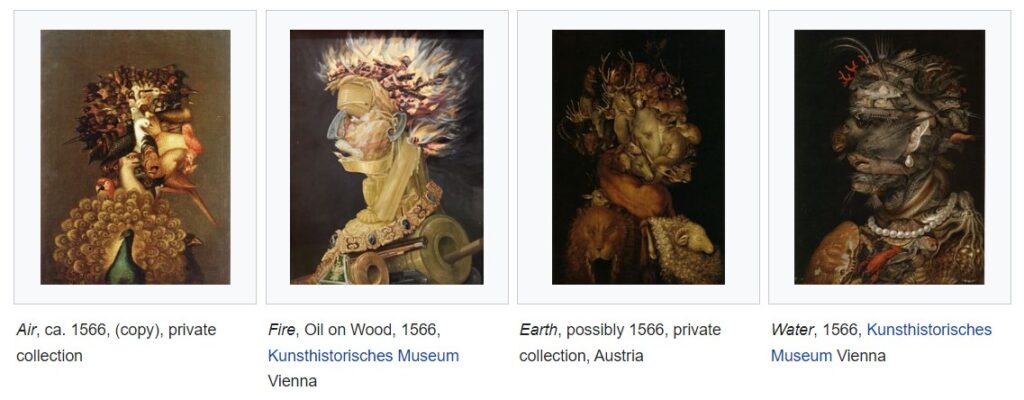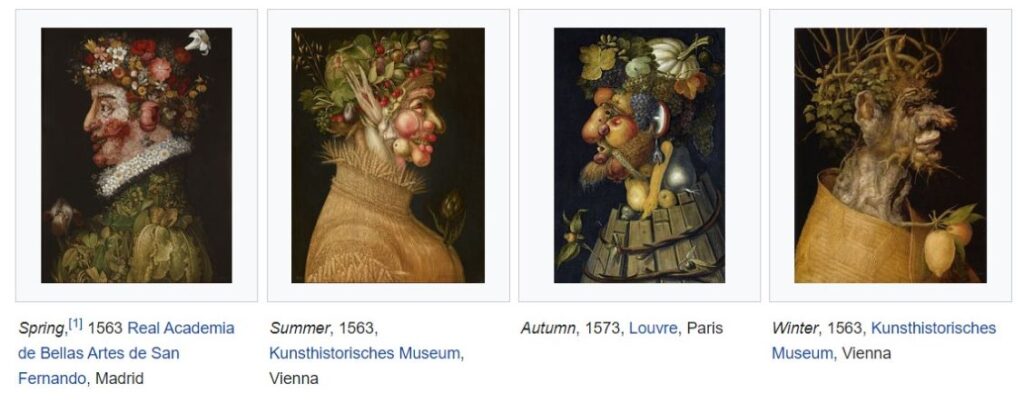
The above painting is by the Italian artist Giuseppe Arcimboldo (1526 – 1593), best known for creating imaginative portrait heads made entirely of objects such as fruits, vegetables, flowers, fish and books. The above portrait is titled “Water,” which is from his Four Elements series painted in 1566.
Within are a number of fish and other sea animals, including a crab, turtle, lobster, octopus. How many creatures can you find?
“The cyclical nature of the seasons presents an easy method of determining the order for that series, but the organization of Four Elements is not quite as simple. However, on the verso of “Spring” is an inscription which translates to “Spring is accompanied by Air, a head of birds”, and begets the idea of pairing each season with its appropriate element. So here, the paintings of Four Elements are ordered by their matching image in the Four Seasons series. The paired paintings are as follows:”
Spring – Air … Summer – Fire … Autumn – Earth … Winter – Water


HIDDEN IN PLAIN SIGHT … Here is an Arcimboldo-inspired portrait (by an unknown artist) which has 28 animals that make the face, plus the camel. It is amazing that all the animals, except the camel, are easy to locate and identify. Only the camel is difficult to find. However, once found, it is then easy to spot each time you view the picture.
And so it is in our daily earth walk. when we have eyes and heart that truly see, all the wonders around us are no longer hidden.
I hadn’t seen this artist’s work before. It IS highly imaginative and technically absolutely amazing, but I personally find it very creepy, like delirium clowns.
Thanks for the information on the connection between the elements and seasons. Very interesting!
Back again. After thinking about the works of Arcimboldo for a while, l I decided to do a little research into 16th century art.
It looks like Arcimboldo was very much an artist of his time. The combining of forms that do not naturally belong together was in fashion. The “grotesque” (from grotto/cave) style, became popular after the discovery of the well-preserved subterranean remains of Nero’s palace in Rome, where wildly imaginative wall paintings were abundant.
Thanks again!